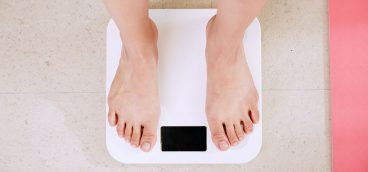Physical Activity vs. Physical Fitness

Question: “I do not enjoy nor have the time to do formal workouts on a regular basis, but I think that I am an active person overall. I walk, hike and enjoy gardening. How hard do I need to exercise to get any benefits from the activity?”
What we are really discussing here is the differences between physical activity and physical fitness. The terms are often used interchangeably, although they are not necessarily the same. Physical fitness is a performance-based concept that can be measured and evaluated by standardized fitness tests. For example, a measure of your present level of fitness could in part be based on how many push-ups, sit-ups, or pull-ups you can do, or how fast you can run a mile. In contrast, the classification of physical activity reflects more on a person’s lifestyle. If you walk, bike or hike on a regular basis or have a physically demanding job, then you are a physically active person despite not formally working out.
Both physical activity and physical fitness are closely linked with good health, although it is entirely possible for an individual to perform well on a specific fitness test but score poorly on a general measure of good health. For example, you might score high on a strength measure such as number of pull-ups performed but display poor cardiovascular (aerobic) health. Likewise, the physically active person may not necessarily test well on specific measures of physical fitness but still enjoy good health. Despite this contradiction, the two are linked: Being physically active will usually improve one or more aspects of physical fitness. Likewise, a high level of fitness increases the probability that you will embrace an active lifestyle.
Exercise and quality of life
A growing body of evidence suggests that regular exercise, whether formal workouts or simply an active lifestyle, can prevent—or at least delay—the onset of many degenerative diseases. Heart disease, stroke, cancer, high blood pressure, obesity and diabetes have all been linked to a sedentary lifestyle. It is well documented that in the absence of regular physical activity:
- We begin to lose bone mass and bone strength after the age of 40.
- The pumping efficiency of the heart may decrease by as much as one-third by the age of 70.
- We lose muscle mass with each passing decade.
- Metabolism slows and we burn fewer calories, which promotes weight gain.
- Immune systems begin to weaken with age, which means we are more likely to get sick and are not able to recuperate as quickly.
The good news is that these symptoms of aging are not inevitable. Most can be avoided or delayed by regular doses of physical activity.
Recommendations of the Centers for Disease Control and Prevention
The most basic recommendation of the Centers for Disease Control and Prevention (CDC) is that adults move more and sit less throughout the day. Sedentary adults who do any amount of moderately-vigorous physical activity will gain health benefits. In short, some physical activity is better than none, so becoming physically active is a plus. Walk rather than ride when it is safe. Climb the stairs rather than take the elevator. Walk the dog, mow the lawn or trim the bushes. Just get moving.
To realize substantial health benefits, the CDC recommends at least 150 minutes (2.5 hours) to 300 minutes (5 hours) per week of moderate-intensity exercise such as brisk walking or recreational cycling, or 75 to 150 minutes per week of vigorous-intensity aerobic physical activity like jogging or running. The CDC also recommends that adults perform muscle-strengthening activities that involve all major muscle groups two or more days per week. Such exercise strengthens muscles, maintains bone density and provides some protection from the debilitating effects of osteoporosis.
The benefits of regular exercise are many and the potential negatives are few. Whether it be formal workouts or normal day-in day-out physical activity, adopting an active lifestyle is still probably the single most effective step a person can take to improve overall health and quality of life.




